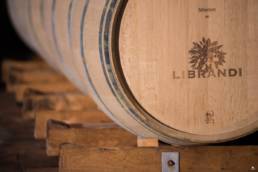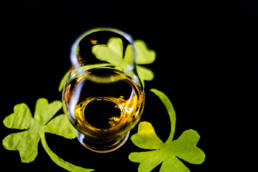FMN – March 2020 – Spring Prediction, Six More Weeks of Wine
Supposedly spring lingers just around the corner but I have always been leery of a semi-indentured quadruped predicting the weather. I do, however, trust my impending seasonal allergies and despite our recent cold snap, they make a compelling argument for spring. This time of year usually coincides with a shift in my beverage preferences perhaps believing that this will somehow aid with ushering in warmer weather. Nonetheless, with great conviction, I pursue my selections for my spring sipping.
As you well know, I resent discrimination of a wine. There are good wines made from all types of grapes, in all different styles and with varying production methods. I do, however, shutter when I see a noble variety stripped of its dignity to produce thin insipid swill. Pinot Grigio has become such a victim of overproduction. A harbor for those rebelling against the heavily oaked and malolactic induced Chardonnays, this variety continues to dwell near the top of white wine sales. Unfortunately, much of the production we see on domestic store shelves continues to be one-dimensional, acidic, citrus water with the only apology being an inexpensive price tag.
With the proper care these wines can be complex, with an interesting textural mouth-feel and a pleasurable drinking experience. There are producers in Alsace, Germany, Italy and even domestically, that still bestow dignity to this variety and thus produce amazing wines. So take the time to search out a good producer and be willing to trade up; just a few more dollars can pay dividends in drinkability.
Although I consume rosé wines year round, the styles change with the seasons. I save the light poolside swilling of Provincial rosé for the sweltering summers and look for more hearty versions during the cooler months. One such area, Tavel, seems to frequent my glass during the transition months. This appellation located in the Southern Rhone Valley of France only produces rosé wines under Tavel AOC. Any white or red made in the area must declassify to Cotes du Rhone.
Like many French appellation laws, Tavel is limited in the grapes used and the amount. There are a total of nine allowed grape varieties (Syrah, Grenache, Mourvèdre, Cinsault, Carignan and Calitor) including the white grapes Picpoul, Bourboulenc and Clairette; with not any variety constituting more than sixty percent of the blend. By using different combinations of free-run and press juices and varying percentages of the aforementioned grape varieties, each producer remains unique with their final wines. The appellation of Tavel remains the heart of rosé wine making consistently producing some of the most complex version in the marketplace.
Many of my “white wine only” drinking brethren falsely believe that all red is overtly tannic (mouth-drying). Nothing could be further from the truth as many red wines have a more subtle tannin structure. One of my favorite non-Pinot lighter red wines comes from Beaujolais. Specifically I think the Crus of Beaujolais (located south of Burgundy) are some of the best buys with regard to French reds. Although I appreciate all 10 Crus, this time of year I gravitate to the more elegant and seductive Beaujolais Cru of Fleurie.
As all of the Cru Beaujolais, Fleurie contains 100% Gamay Noir; a grape exiled from Burgundy hundreds of years ago by Philip the Bold. This misunderstood variety gets no help from the bubble gum aroma, carbonic maceration version of Beaujolais Nouveau, released the third Thursday of November. The Cru wines are treated with much more dignity and are still one of the best kept secrets of geeky French wine lovers. Many wine writers continue to avoid the subject of Beaujolais Cru for the selfish reason as their popularity increases, their price point becomes less attractive. Nonetheless, I want to empower the consumer so buy, drink and enjoy this French gem.
So fret not, spring will eventually get here despite our current weather. In the interim, make sure you properly prepare with enough wine to usher in the warmer weather and help wash away the impending pollen season.
Suggested Wines:
Terlato Vineyards Pinot Grigio 2016 Friuli Colli Orientali DOC $17.99
Hailing from northeastern Italy among the mountainous region of Friuli- Venezia Giulia, this Terlato version defines what Italian Pinot Grigio can achieve. Whether the magic lies with the use of the small berried R6 clone, the meticulous vineyard practices or the careful winemaking, this will change how you view this variety. The wine has overt aromatics of rich orchard fruit (apple, pear, peach) with a hint of a blossom note and fresh Brazil nuts. The dry palate has upfront and linear citrus-like acidity with a medium plus body. Flavors of brined tropical citrus, tangerine pith and bitter nut give way to a slightly warming tangy finish. Pair with citrus based poultry dishes, goat cheese, or three days in a row without rain.
Chateau de Trinquevedel rosé 2017 Tavel AOC $19.99
This particular rosé contains 45% Grenache, 24% Cinsault, 15% Clairette, 10% Mourvèdre, 6% Syrah. One first notices the deep color and complex aromatics of red fruit (raspberry, strawberry), rhubarb, and classic garrigue (lavender, thyme, mint, etc). The mineral-laden palate has prevalent acidity that seems to emerge more on the finish and bright crunchy red fruit wrapped in a hearty medium plus body. This sturdy rosé pairs well with BBQ chicken (or herbs de Provence), slow roasted pork shoulder or creamy cheeses (brie).
Château de Beauregard Fleurie Poncié 2016 Fleurie AOC $22.99
This wine comes from a small vineyard of five hectares (a little over 12 acres) located in the hamlet of Poncié. The wines are hand harvested, 100% destemmed, fermented and aged for 15 months. The resulting wine has elegant aromas of tart cherry, spice, herbal and floral tones (rose and violet). The palate has a tart acidity, medium body and medium minus fine grained slightly woody tannin notes. The palate flavors mirror the nose with the addition of minerality. This easy drinking pairs well with grilled fish (salmon or tuna), beer can chicken, and pork tenderloin.



